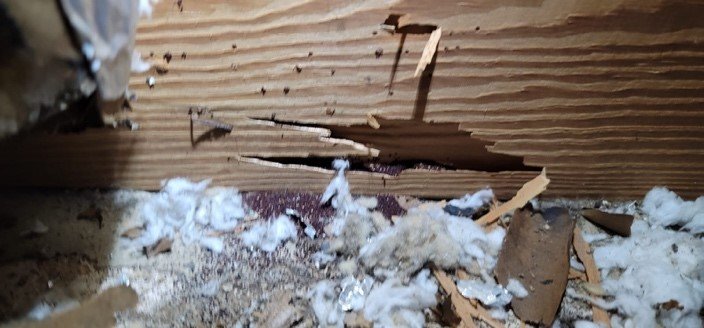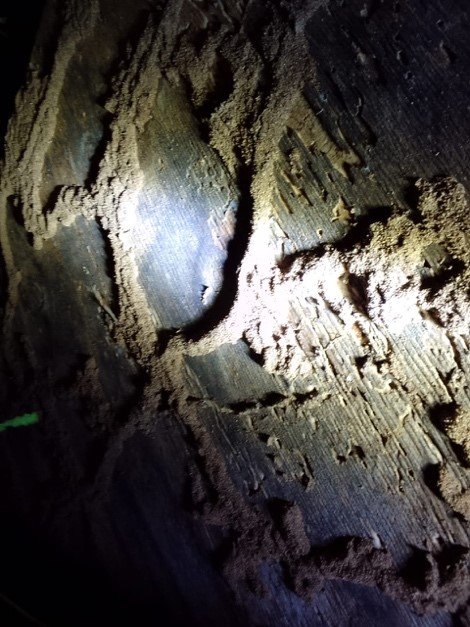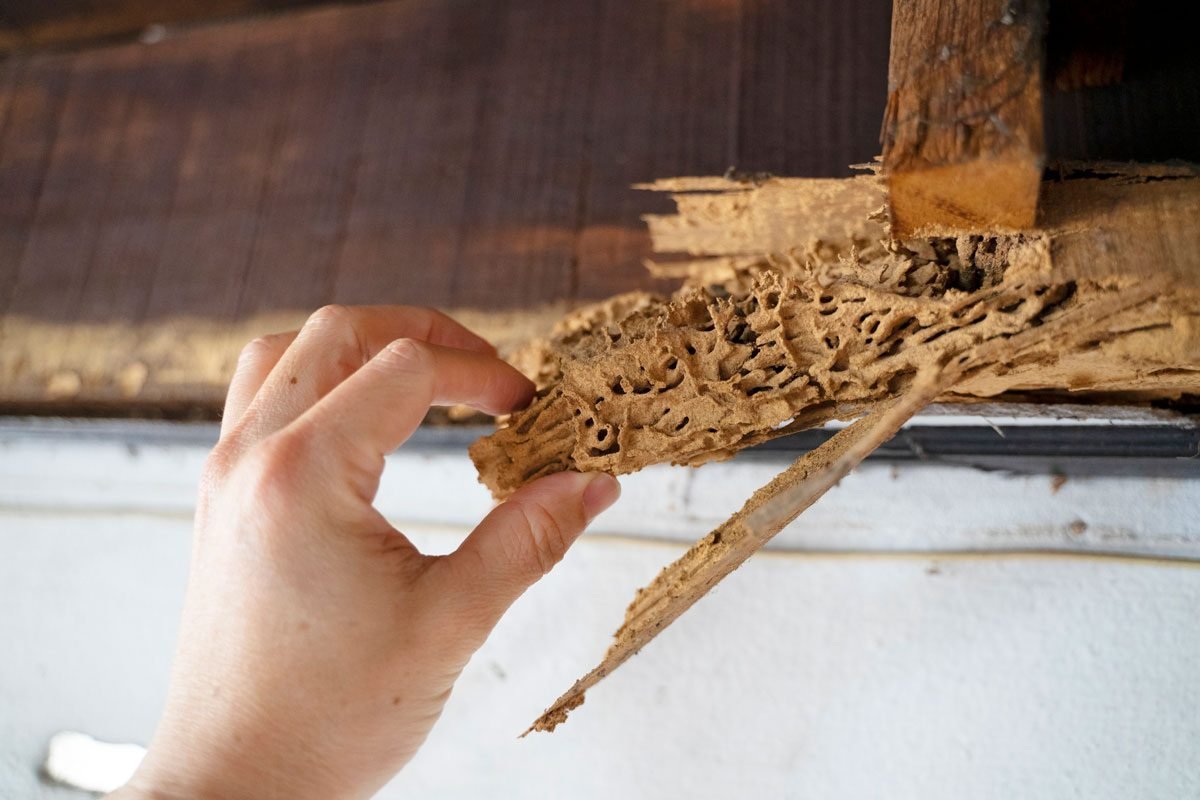
Termite Control Service
Expert Termite Control Service
Termites are Wood Destroying Organisms (WDO) that can be found in tropical climates such as South Florida. This part of the globe creates the perfect conditions for the two most common and destructive Termites in the world, that are, Drywood Termites and Subterranean Termites. Although there are many different species of organisms that will destroy wood in South Florida, such as: Carpenter Ants, Powderpost Beetles, Dampwood Termites, Formosan Termites, and others, Homeowners in South Florida will become very familiar with the two most common structural pests which are the two already mentioned. Both species are almost identical, and homeowners could easily confuse one with the other. Even If you put both Termite species side by side, only a train individual would be able to determine and identify the correct and corresponding species.
Both Termite colonies contain three types of castes: workers, soldiers, and reproductives. Winged reproductive termites are known as swarmers. Workers are by far the most numerous, constituting around 90 to 98 percent of the colony members. A Termite colony can take anywhere from 3 to 5 years to mature and produce winged reproductives (Swarmers). Once a Termite colony reaches a mature state, the swarmers will come out when the conditions are perfect, generally during swarm season.
GET A FREE QUOTE TODAY
Complete the form below and we will contact you immediately to discuss your pest problem!
These swarmers are attracted to light, usually flying towards a light source such as a Window or Light fixture. Their only objective is to create new colonies, they will find a mate, peel their wings and start new colonies, creating more damage to your investment.
Termite treatments are completely different for each of these two species. It is extremely important to identify the species before applying a treatment to control and eradicate a Termite problem. Misidentification could result in additional expenses, further damage, and unnecessary headaches
Types of Termites

Drywood

Formorsan

Subterranean


DRYWOOD TERMITES
Drywood Termites live inside the wood and only come out when they are swarming to create new colonies. This species eats and drink from the wood itself and the entire colony lives within the structure and never make contact with the soil. The first sign of a Drywood Termite infestation is the Frass (droppings) or pellets that they live in the ground or next to the infested wood. Frass is digested wood, when Termites clean their nest, they push these pellets through kick holes they create in the infested wood since they don’t like to live among their droppings. The color of the droppings could vary depending on the color of the wood they have infested. It could be clear or dark in color or a mix of it.
Drywood Termite colonies are small in numbers compared to Subterranean Termites, Usually fewer than 1,000 in a colony, but make no mistake, they have the potential to do severe damage to a structure.
SUBTERRANEAN TERMITES
Subterranean Termites compared to Drywood Termites, live in the ground, deep in the soil, they are always foraging for food sources, and any dead wood or anything that contains cellulose such as wood, they will call it a feast. Their colony size could be well in the millions, and they work 24/7, all year round. They could eat 80 times what a Drywood colony eats in the same amount of time. These species are responsible for more than $5 Billion in damage per year, that is more than fires and storms combined.
Subterranean Termites travel from their nesting site in the soil to the structure they have infested bringing food and nutrients to the rest of the colony members. They go up and down every 24 to 48 hours. They are blind and don’t like light, they create mud tunnels or tubes to travel from point “a” to point “b”. Mud tubes are a distinctive feature of Subterranean Termites, they are made of soil and wood, combined with Termite saliva. These mud tubes are often found outdoors where soil meets the structure of the property or under the house in a crawlspace, just to mention a few. So, if you ever find one, don’t remove it yourself.
Now that you have become more familiar with the behavior of these two species of Termites, it will be easier to understand why a treatment that is effective for Drywood Termites, will not eradicate a colony of Subterranean Termites and vice-versa. Let’s say you have Subterranean Termites and you tent your house (tents are intended to eradicate Drywood Termites), the gas will kill any Termites that are within the structure at the moment of treatment, however, the colony still is intact after treatment, and those remaining millions of members, will continue to come up to the structure and do damage. The gas that is injected (Vikane Gas) during the tenting process, will never reach the soil and under where the colonies are situated.


On the other hand, a regular treatment for Subterranean Termites is to treat the soil around the structure of a property. A trench is dug and the Termiticide is applied to the trench. This makes an invisible barrier for Subterranean Termites, and when they go through the treated soil, they get infected without knowing, thus infecting the rest of the colony as they clean each other, eventually reaching the entire colony and eradicating it. So, if you treat for Subterranean Termites when you have Drywood Termites, Drywood Termites will never come in contact with the treated soil, thus, they will continue to exist and expand in numbers and areas within the structure.
There are other treatment options depending on the species such as Termite Baiting and Monitoring Stations, Spot Treatments, Preventive Treatments, etc. Please contact us for more information.
Signs of Termite Infestations
Termites pose a serios risk to the structural integrity of your home or business. It’s crucial to understand how to spot a probable Termite Infestation and/or Termite damage!

Here are some signs that might help you identify Termite activity, however, if you suspect activity, contact a Licensed Professional immediately, only a trained individual can make the proper identification of the Termite Species and recommend the right treatment.
- Mud tubes on wall or wood, either indoors or outdoors.
- Papery or hollow sounding timber.
- Termite droppings
- Discarded Termite Swarmer Wings close to a light source or Window sill (indoors or outdoors).
- Tight or Stuck Windows and doors.
Termite Control Process
Inspection
Utilizing the most recent technology, our team of termite treatment specialists conducts a thorough inspection of your property
Termite Colony Elimination
Our expert professionals perform the anti-termite treatment to eliminate termite colonies at the source in a scientific way
Monitoring New Termite Activity
We keep a constant eye on the termite bait stations around your property to spot new termite activity
Regular Maintenance Of Termite Bait Stations
Our experts take proper care of the Termite Baiting Monitoring System Regularly to detect and exterminate early activity of new Termite colonies near your property.
